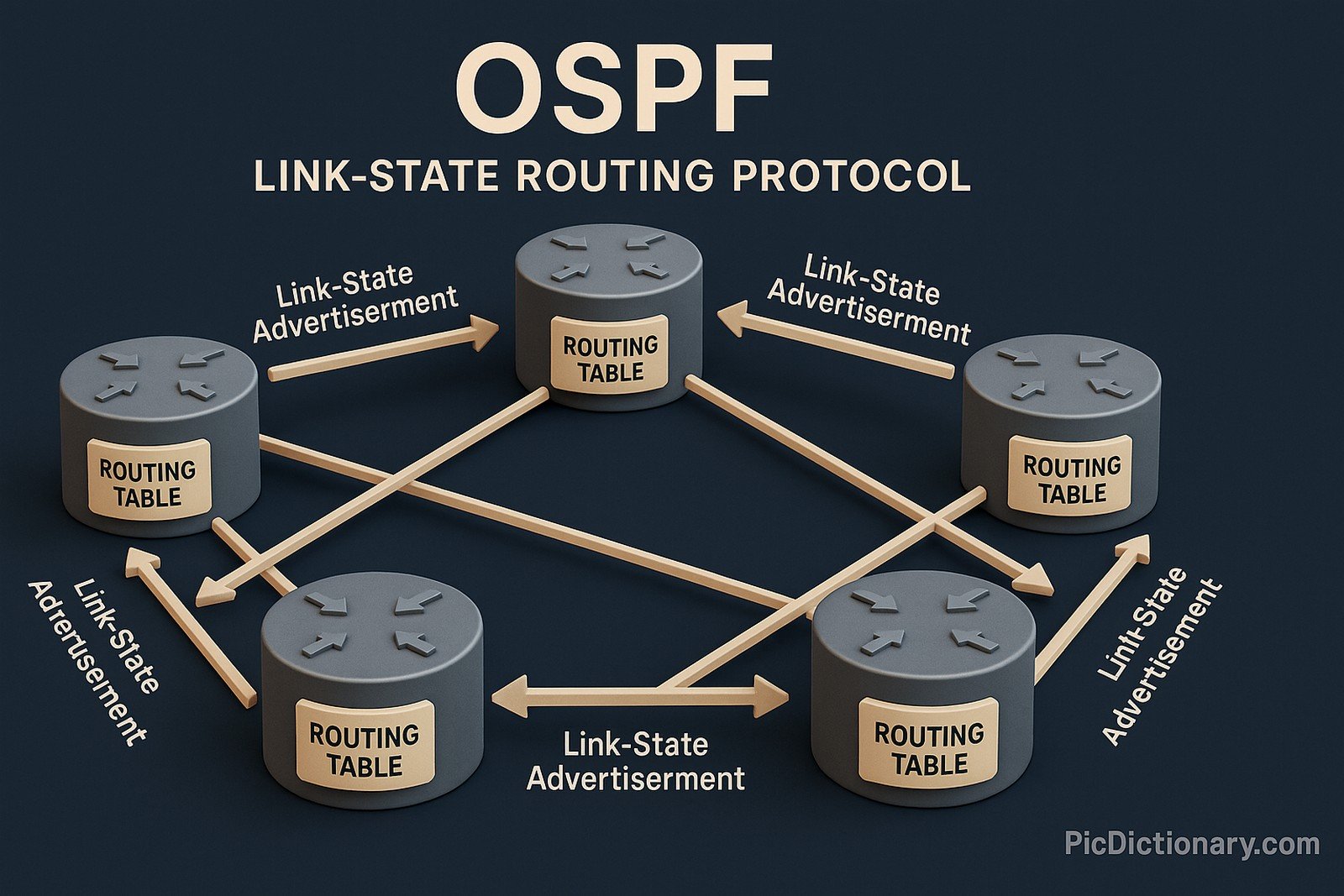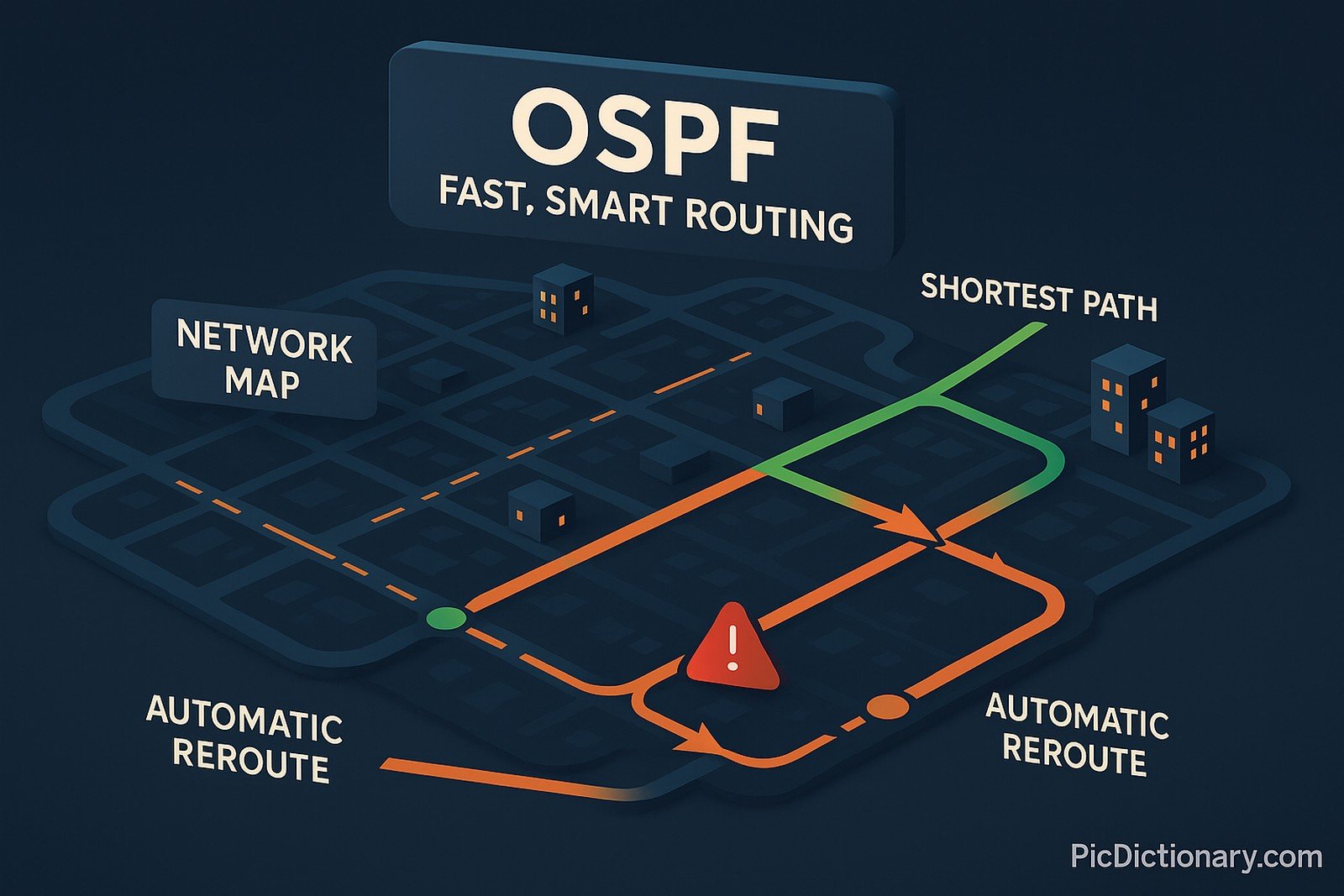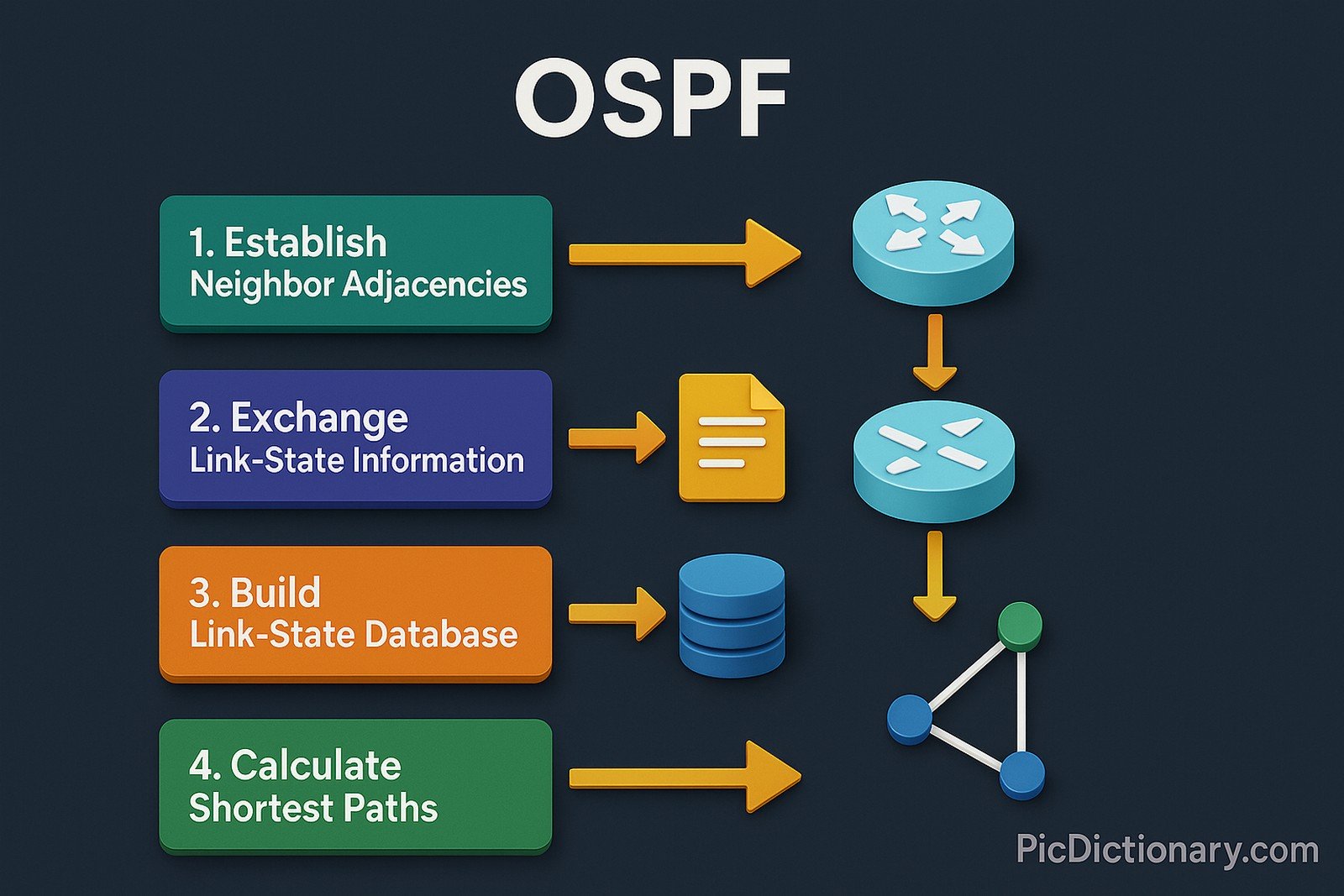OSPF (Open Shortest Path First)

Quick Navigation:
- OSPF (Open Shortest Path First) Definition
- OSPF (Open Shortest Path First) Explained Easy
- OSPF (Open Shortest Path First) Origin
- OSPF (Open Shortest Path First) Etymology
- OSPF (Open Shortest Path First) Usage Trends
- OSPF (Open Shortest Path First) Usage
- OSPF (Open Shortest Path First) Examples in Context
- OSPF (Open Shortest Path First) FAQ
- OSPF (Open Shortest Path First) Related Words
OSPF (Open Shortest Path First) Definition
OSPF (Open Shortest Path First) is a link-state routing protocol used in Internet Protocol (IP) networks. It dynamically determines the most efficient path for data to travel between devices by maintaining a complete map of the network and calculating shortest paths using Dijkstra's algorithm. OSPF supports hierarchical design through areas, reducing routing overhead and ensuring scalability in large enterprise and service provider networks. It also allows rapid convergence, making network communication more reliable and resilient.
OSPF (Open Shortest Path First) Explained Easy
Imagine a city map where each road knows the shortest route to every destination. OSPF works like this in computer networks. It helps computers and devices talk to each other by finding the fastest and safest paths for data to travel. If a road closes (a connection fails), OSPF quickly finds a new way, so messages still get where they need to go without delay.
OSPF (Open Shortest Path First) Origin
OSPF was developed by the Internet Engineering Task Force (IETF) in the late 1980s as a more advanced alternative to the older Routing Information Protocol (RIP). It was introduced to support larger and more complex IP networks requiring faster convergence and better scalability.
OSPF (Open Shortest Path First) Etymology
The name originates from its routing approach of consistently choosing the shortest and most optimal path for data packets between devices.
OSPF (Open Shortest Path First) Usage Trends
OSPF has remained a core routing protocol in enterprise and ISP networks for decades. Its use continues to grow in large-scale data centers, campus networks, and hybrid cloud environments. While newer protocols like IS-IS and BGP exist, OSPF is favored for its reliability, simplicity, and support for multi-vendor interoperability.
OSPF (Open Shortest Path First) Usage
- Formal/Technical Tagging:
- IP Routing
- Link-State Protocol
- Network Infrastructure - Typical Collocations:
- "OSPF adjacency"
- "OSPF routing table"
- "OSPF areas"
- "OSPF link-state advertisements (LSAs)"
OSPF (Open Shortest Path First) Examples in Context
- Network engineers configure OSPF to ensure efficient routing in large company networks.
- OSPF helps data center routers quickly adapt to network changes without downtime.
- During network outages, OSPF recalculates paths automatically, maintaining connectivity.
OSPF (Open Shortest Path First) FAQ
- What is OSPF?
OSPF is a link-state routing protocol that finds the most efficient path for data within IP networks. - How does OSPF differ from RIP?
OSPF uses link-state routing and calculates shortest paths with Dijkstra's algorithm, while RIP uses distance-vector routing and limits hops. - What algorithms does OSPF use?
OSPF uses Dijkstra's shortest path first (SPF) algorithm. - Can OSPF work with other protocols?
Yes, OSPF can coexist with protocols like BGP and EIGRP in large network infrastructures. - Is OSPF used in small networks?
OSPF is typically used in medium to large networks, though it can function in smaller setups if needed. - What are OSPF areas?
OSPF areas are logical groupings of routers to optimize routing efficiency and reduce overhead. - How fast does OSPF converge?
OSPF convergence is fast, usually within seconds of detecting changes. - Does OSPF support IPv6?
Yes, OSPFv3 is the version designed to support IPv6 networks. - How does OSPF handle network changes?
OSPF detects topology changes and recalculates routes to maintain optimal paths. - Why is OSPF preferred in enterprise networks?
It offers scalability, rapid convergence, and robust support for complex network topologies.

OSPF (Open Shortest Path First) Related Words
- Categories/Topics:
- IP Routing
- Network Protocols
- Internet Infrastructure
Did you know?
The first OSPF standard was published as RFC 1131 in 1989, and since then, OSPF has evolved to support both IPv4 and IPv6 networks, becoming a key protocol in modern multi-layered network architectures.
PicDictionary.com is an online dictionary in pictures. If you have questions or suggestions, please reach out to us on WhatsApp or Twitter.Authors | Arjun Vishnu | @ArjunAndVishnu

I am Vishnu. I like AI, Linux, Single Board Computers, and Cloud Computing. I create the web & video content, and I also write for popular websites.
My younger brother, Arjun handles image & video editing. Together, we run a YouTube Channel that's focused on reviewing gadgets and explaining technology.



Comments powered by CComment